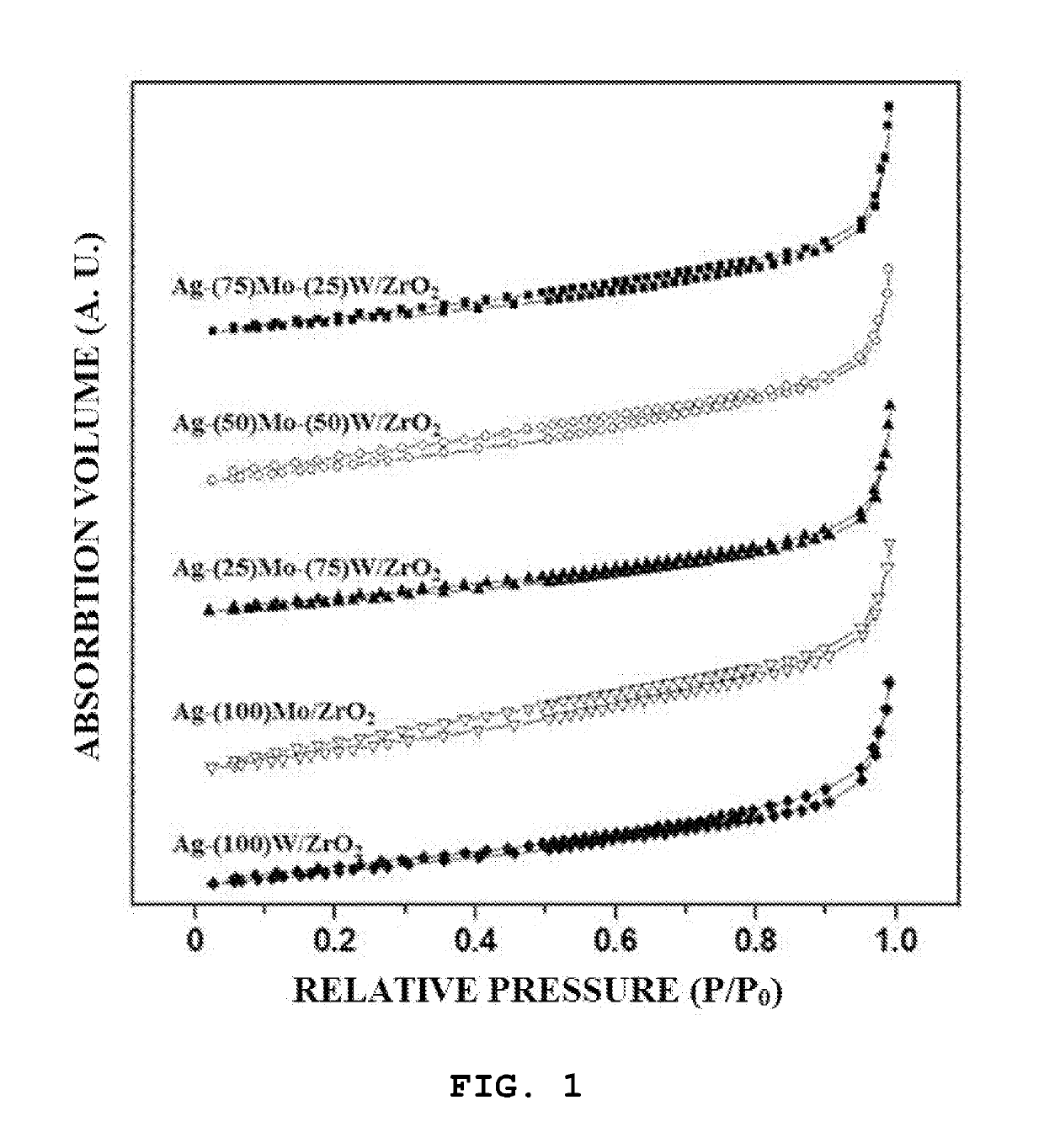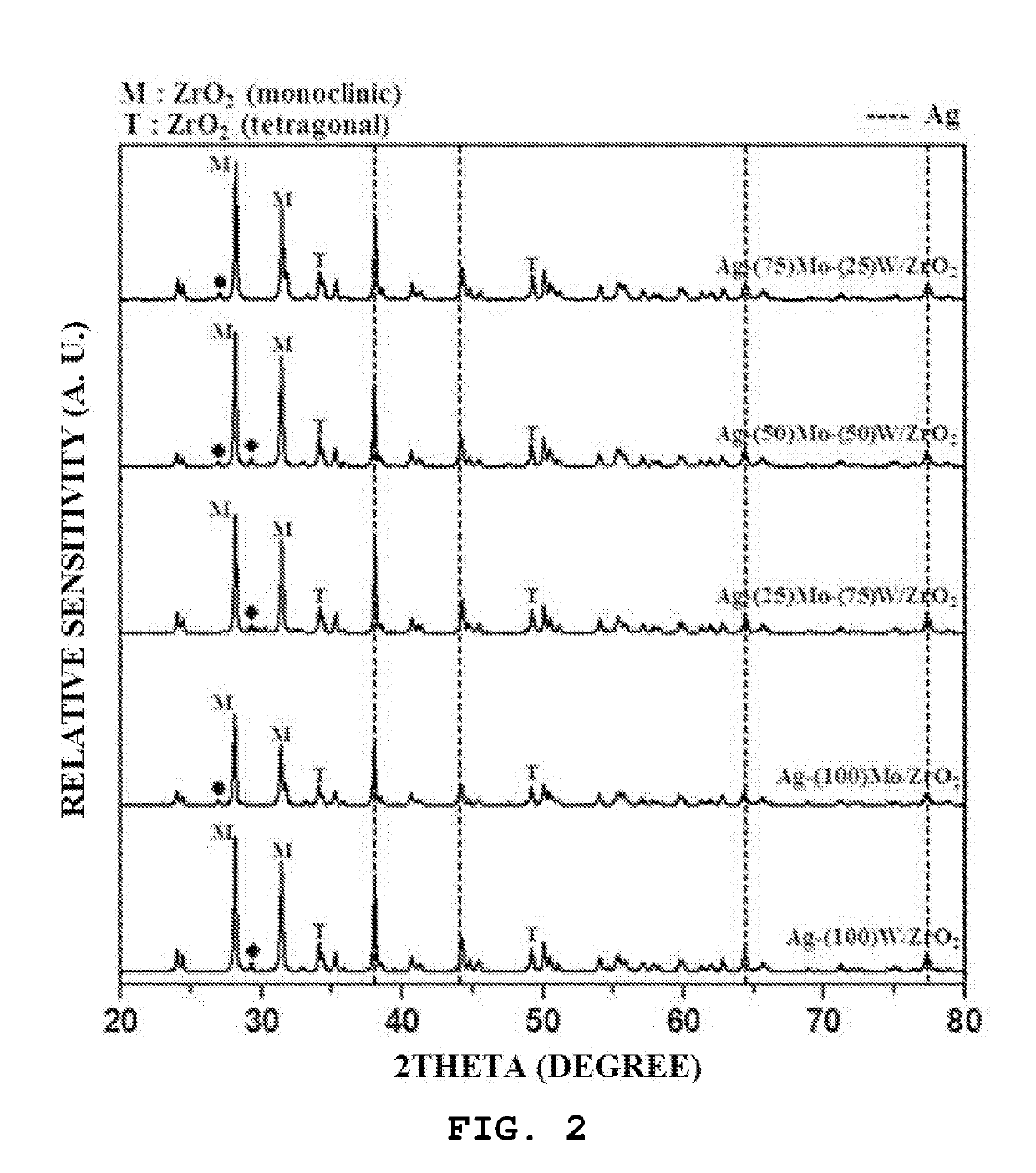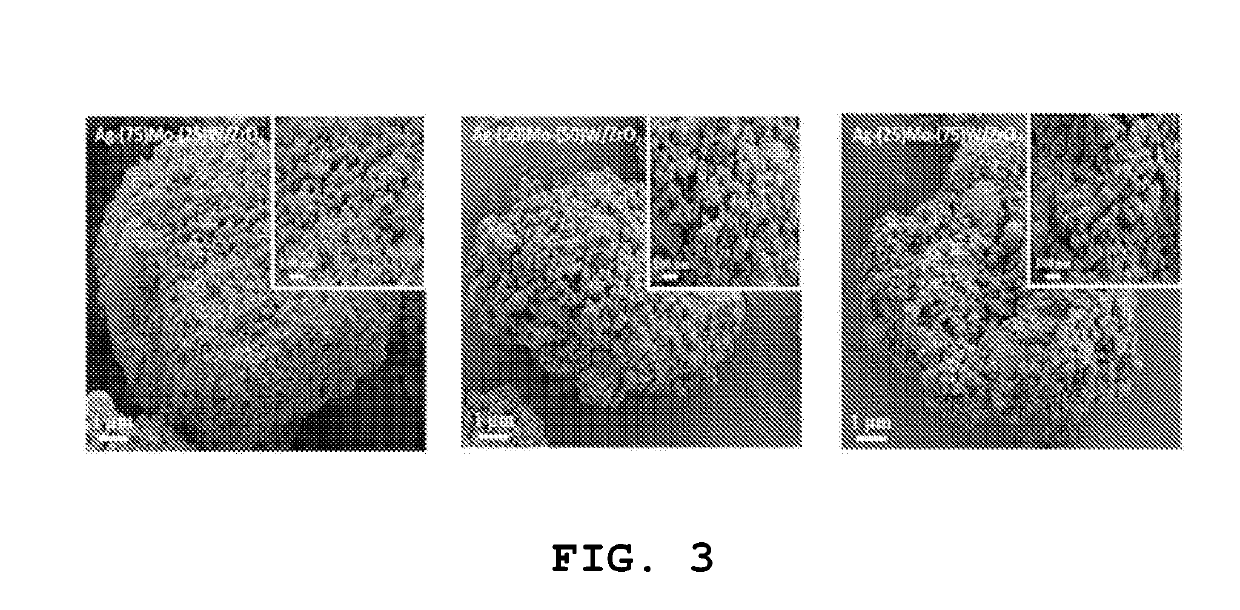Propylene direct oxidation reaction catalyst, method for preparing same, and method for preparing propylene oxide through propylene direct oxidation reaction using same
a direct oxidation reaction and propylene technology, applied in the direction of physical/chemical process catalysts, metal/metal-oxide/metal-hydroxide catalysts, etc., can solve the problems of high cost, disadvantageous propylene indirect oxidation, and high cost of propylene indirect oxidation, so as to achieve the effect of easy preparation of propylene oxide, low silver content and low cos
- Summary
- Abstract
- Description
- Claims
- Application Information
AI Technical Summary
Benefits of technology
Problems solved by technology
Method used
Image
Examples
example 1
[0118]A catalyst was prepared by using a slurry method as follows. 6 ml of distilled water, 0.9 ml of ethylenediamine and 1.63 g of oxalic acid were put into a beaker, and then 1 g of oxide (Ag2O) was input and mixed. Then, after a silver precursor was completely dissolved, 0.1725 g of ammonium molybdate ((NH4)2MoO4) and 0.0575 g of ammonium (para)tungstate ((NH4) 10H2(W2O7)6-xH2O) were introduced into a solvent in which the silver precursor was dissolved such that a weight ratio of the sum of a molybdenum oxide (MoO3) and a tungsten oxide (WO3) to the total weight of the finally prepared catalyst was fixed to 5 wt %, and then a weight ratio of the molybdenum oxide to the tungsten oxide was 75:25.
[0119]Thereafter, when 3.54 g of a zirconium oxide (Sigma-Aldrich) as a support material was introduced, a slurry material was obtained. When a slurry was stirred at 60° C. until moisture evaporates, a solid material remained. Then, the solid material was further dried in an oven at 120° C....
example 2
[0120]A catalyst (Ag-(50)Mo-(50)W / ZrO2) was prepared in the same manner as in Example 1, except that the weight of the molybdenum oxide to the tungsten oxide in Example 1 was changed to 50:50%.
example 3
[0121]A catalyst (Ag-(25)Mo-(75)W / ZrO2) was prepared in the same manner as in Example 1, except that the weight of the molybdenum oxide to the tungsten oxide in Example 1 was changed to 25:75%.
PUM
| Property | Measurement | Unit |
|---|---|---|
| temperature | aaaaa | aaaaa |
| weight | aaaaa | aaaaa |
| crystal phase fraction | aaaaa | aaaaa |
Abstract
Description
Claims
Application Information
 Login to View More
Login to View More - R&D
- Intellectual Property
- Life Sciences
- Materials
- Tech Scout
- Unparalleled Data Quality
- Higher Quality Content
- 60% Fewer Hallucinations
Browse by: Latest US Patents, China's latest patents, Technical Efficacy Thesaurus, Application Domain, Technology Topic, Popular Technical Reports.
© 2025 PatSnap. All rights reserved.Legal|Privacy policy|Modern Slavery Act Transparency Statement|Sitemap|About US| Contact US: help@patsnap.com



